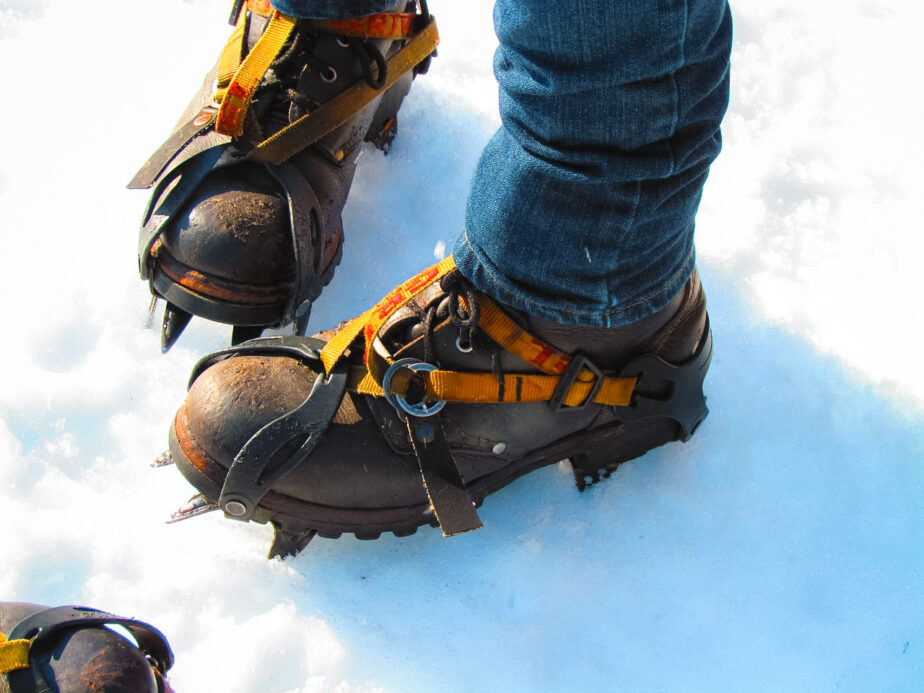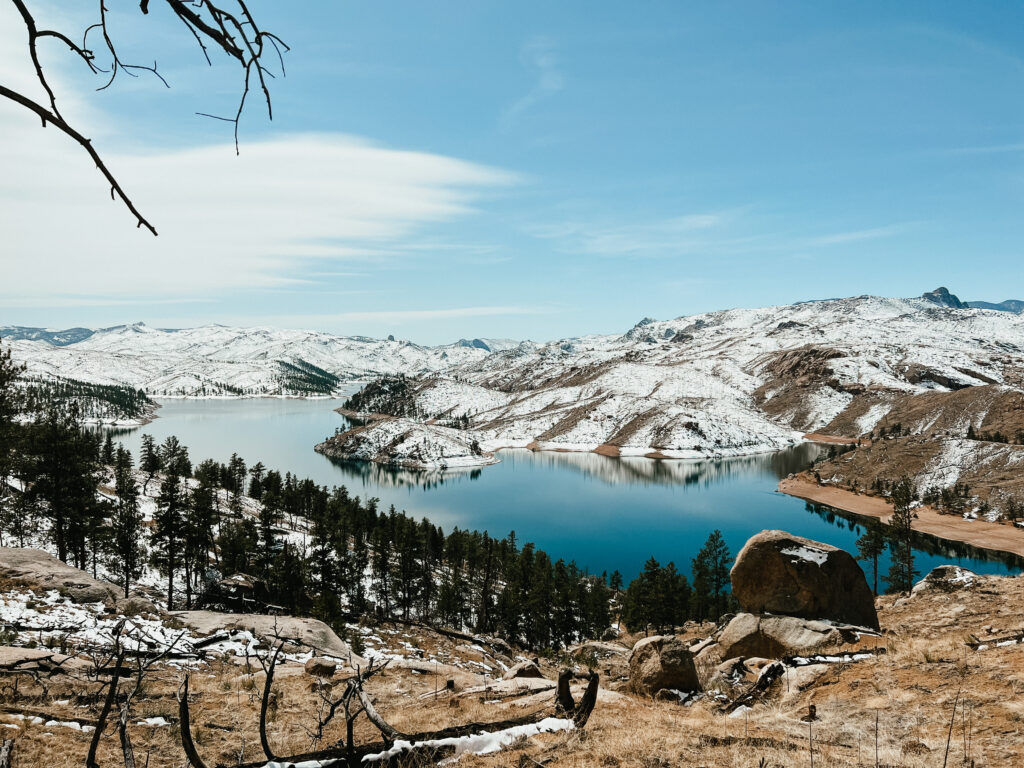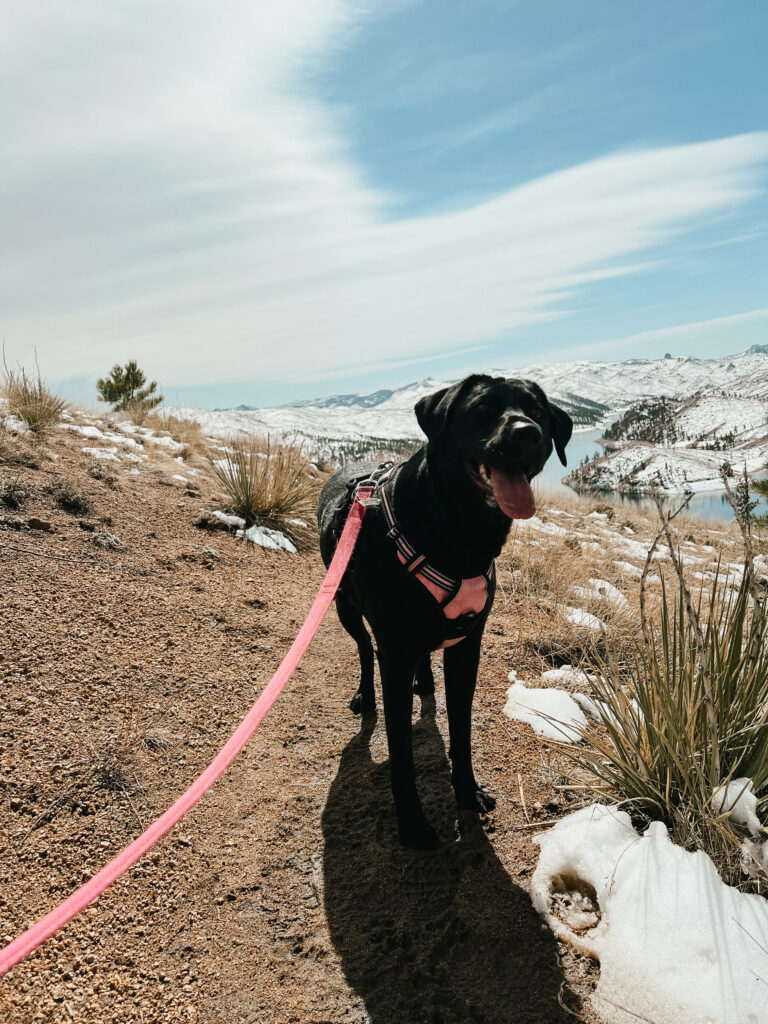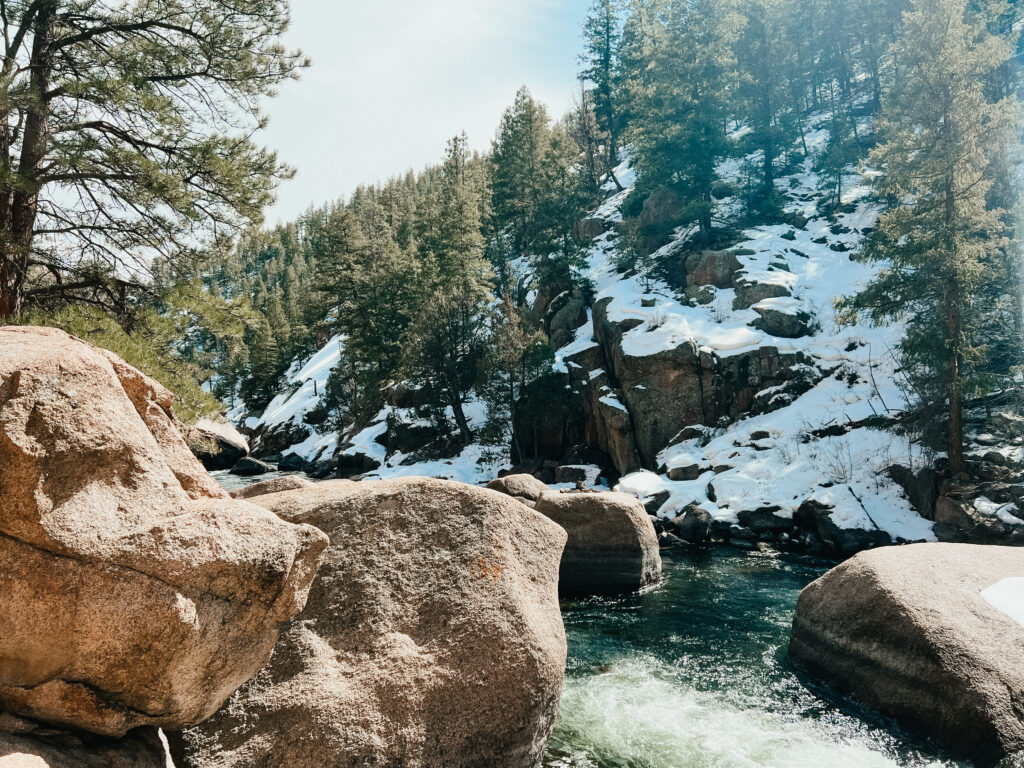Crampons Vs Microspikes: Which Should You Use And When? (2023)
Trekking Price's contains affiliate links and is a member of the Amazon Services LLC Associates Program. If you make a purchase using one of these Amazon links, I may receive compensation at no extra cost to you. See my Disclosure Policy for more information.
Are you wondering about crampons vs microspikes?
Hiking in the winter requires extra preparation and gear due to the chilly temperatures, more difficult terrain, and added challenge.
Trekking through snow and ice requires extra traction which is when the crampons vs microspikes debate comes into the picture!
Crampons and microspikes were created to help add extra grip to your hiking boots so that you can sustain the ice and snowfall while hiking.
Choosing the correct device for your hike can make or break your experience out on the mountains.
As avid hikers and having lived in Colorado, we performed hours of research to find the best pair of crampons and microspikes for our winter hiking adventures so that we had the best experience on the snowy trails.
Continue reading below about crampons vs microspikes to help you choose the perfect pair for your next winter hike!

Trekking Price’s contains affiliate links and is a member of the Amazon Services LLC Associates Program. If you make a purchase using one of these Amazon links, I may receive compensation at no extra cost to you.
Crampons Vs Microspikes: Are They The Same?
Crampons and microspikes were both created to add traction to your boots or shoes while hiking through slippery terrain such as snow and ice.
Both of these devices were designed with spikes on the bottom to help you gain steady footing while trekking up mountains in the winter.
However, crampons and microspikes vary drastically in their design and specific purpose when it comes to their proper use.
Crampons were designed with significantly bigger spikes than microspikes and are intended to be used on steep surfaces and slopes.
Whereas, microspikes were designed with smaller spikes and were created to be used for walking on ice or snow on a flat surface or a small incline.
It’s important to consider the incline, terrain, and surface you will be adventuring on when considering crampons vs microspikes for your winter hikes.

More Info About Crampons
Crampons are a foot frame that you place around your hiking boots with large spikes underneath. They were created for steep slopes, intense mountaineering, or ice-climbing.
When Are Crampons Necessary?
Crampons are necessary when mountaineering, embarking on intense (steep) terrain, or ice-climbing.
Can You Put Crampons On Any Hiking Boots?
In general, if you have flexible crampons then they can be worn with flexible hiking boots.
However, if you plan on climbing or doing some intense mountaineering then it will require a more sturdy boot to go with!
You will more than likely need a mountaineering boot to go with your crampons.
After all, you are investing in crampons because you believe you will be embarking on some pretty intense terrain that requires extra traction and bigger spikes!
Can You Use Crampons On Ski Boots?
Yes!!! Most crampons can be used with ski boots.
However, it is important to check the compatibility of both your crampons and your ski boots to make sure that the two can go together.
Can I Bring Crampons In My Carry-On?
There is a wide range of conflicting information about whether or not you can bring crampons in your carry-on bag.
According to this TSA website, crampons can be in your carry-on bag.
HOWEVER, the ultimate decision is up to the TSA officer on whether or not they will allow you to bring crampons through.
We recommend checking your crampons in your checked luggage so that you can avoid any problems!

More Info About Microspikes
Microspikes were designed as a “sleeve” of chains that slip over the bottom of your boots and consist of many small spikes underneath.
The primary purpose of microspikes is to give you extra traction while walking on slippery flat (or small sloped) surfaces.
When Are Microspikes Necessary?
Microspikes are necessary when walking on ice or snow on mostly flat surfaces.
They were designed to pull on over the bottom of your boots so the small spikes increase your traction while walking.
The design of this device was intended for all the small spikes to stick directly into the snow or ice to give you better support… that is why it is not recommended to use microspikes on steep surfaces because it is unlikely that all of the spikes will grip into the ice or snow.
Are Microspikes Good For Snow?
Microspikes are excellent for snow because they create better traction and therefore, reduce the risk that you slip and fall.
Can You Walk On Rocks With Microspikes?
You can walk on rocks with microspikes but it is not recommended. Afterall, microspikes were created to stick into slippery surfaces.
Therefore, when walking on an obstacle such as a rock, the microspikes are unable to stick into the surface of the rock.
Additionally, walking on rocks with microspikes may dull or wear down your microspikes which defeats the purpose of wearing them!
Can You Walk On Pavement With Microspikes?
Microspikes were not created to be worn on pavement. They were created to stick into surfaces such as snow and ice.
Oftentimes, if you wear microspikes on pavement you will feel added pressure and most likely feel unbalanced because the spikes do not have a surface to stick into.
Additionally, you should avoid wearing microspikes on pavement so that the spikes do not wear down.
Can You Run In Microspikes?
Microspikes can be used to run snowy flat trails in the winter!
It’s important to note that running on ice can be dangerous, even with microspikes on.
We recommend sticking to snow packed trails for an optimal experience.
Can I Bring Microspikes In My Carry-On?
There is conflicting information about whether or not microspikes can be brought on an airplane in your carry-on bag.
In general, we would suggest checking this item in your checked bag and not bringing it in your carry-on.
It is best to avoid any potential problems and to stay away from bringing any objects that can be considered “sharp” or even “harmful” to others.

Best Crampons For Hiking
🌟 Petzl Leopard FlexLock Crampon
We recommend the Petzl Leopard Crampon for those looking for the best crampons on the market!
They are designed for ice-climbing and hiking up steep inclines. They were created to be sturdy yet lightweight.
Lastly, they were designed to be adjusted without having to use tools.
👉🏼 Click here to get your pair of Petzel Leopard Crampons today!
⭐️ Grivel G-12 Cramp-O-Matic
The Grivel crampons are another excellent choice when it comes to the best crampons for mountaineering, ice-climbing, and hiking up steep slopes.
These crampons were designed with various features in mind but the one that stood out to us was the four points on the crampon rails that give extra stabilization and security when descending down the mountain.
👉🏼 Click here to get your pair of Grivel G-12 Matic Crampons today!

Best Microspikes For Hiking
🌟 Kahtoola MICROspikes
We cannot recommend these microspikes enough for winter hiking! We love that they come in a variety of sizes to fit your specific needs.
Additionally, we love the Kahtoola brand’s mission and how their priority is to make the best gear for people to get outside and enjoy more of nature.
Another thing that stood out about this brand is that they put a special emphasis on creating a product that will keep you safe while exploring the outdoors.
You can tell that Kahtoola put a significant amount of thought and passion into creating this product and it pays off when it comes to actually using these microspikes on winter hikes!
👉🏼 Click here to get your pair of Kahtoola MICROspikes today!
⭐️ Yaktrax Pro Traction Cleats
The Yaktrax microspikes are a great option for those looking for microspikes on a budget.
They come in a variety of options and sizes and are great for those that are just starting out on their winter hiking adventures and want to save some money!
They are made out of durable rubber and stainless steel coils and were created for you to enjoy snow and ice conditions without having to worry about traction!
👉🏼 Click here to get your pair of Yaktrax Pro Traction Cleats today!

Tips For Hiking With Crampons Or Microspikes On:
There are countless tips and tricks that we have learned while hiking with our crampons or microspikes on! Check out our ultimate list below:
- Bring Plenty of Snacks and Water – As with any hike, make sure that you stay hydrated and full while out on the trails. If you are hiking with crampons or microspikes on then you are most likely headed up a higher elevation and exerting more energy so be sure to take care of your body! Check out this post on the best energy bars for hiking so that you can stay happy and healthy while exploring the great outdoors.
- Check the Weather Forecast in Advance – You are already preparing to wear crampons or microspikes ahead of time, meaning the conditions are probably snowy or icy. However, be sure to check the weather before you head out on the hike because you will want to wear the appropriate gear for whether it is supposed to be sunny or cold! I hate getting to the top of a hike and being too cold to enjoy the views so make sure you pack accordingly.
- Use the AllTrails app – Make sure that you use the AllTrails app to figure out what hike you want to do and be sure to download the hike map ahead of time. This is super helpful for hikes when you don’t have the best cell service so that you always know where you are going! Be sure to check out the best hikes in southern Colorado or the best hikes near Denver for lists of our favorite trails that we have found using the AllTrails app!

FAQs About Crampons Vs Microspikes:
Can you use crampons instead of microspikes?
Yes, you can use crampons instead of microspikes. Crampons are the more “hardcore” of the two.
Therefore, you may not need the extra long spikes but they will get the job done and allow you to have more traction while hiking.
Do you really need microspikes?
For flat trails during the winter months, we cannot recommend microspikes enough.
They truly give you a peace of mind when hiking on trails because they give you more traction and you worry less about slipping or falling.
Do you need crampons for winter hiking?
If you plan on hiking up steeper trails, you need crampons for your winter hike!
Crampons provide you with extra grip and their big spikes allow you to grasp terrain, ice, and snow more easily.
If you plan on doing mountaineering, ice climbing, or hiking up steep terrain… definitely invest in some crampons for your winter hikes.

Conclusion: Crampons Vs Microspikes
The crampons vs microspikes debate really boils down to what kind of terrain and slope you see yourself embarking on!
If you see yourself climbing and going up intense terrain, you should definitely invest in crampons.
However, if you plan on sticking to flat trails and “typical” winter hikes, then microspikes are your go-to!
We hope this article on crampons vs microspikes helps you embark on your next winter adventure! Happy Exploring!
